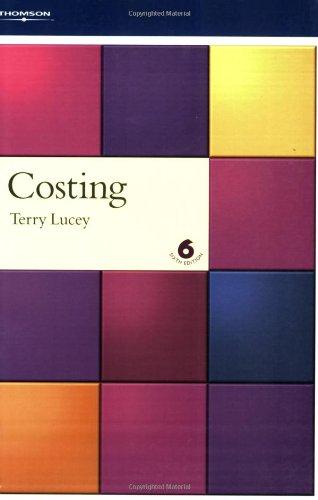Question
P8-1B The following represents selected information taken from a companys aging schedule to estimate uncollectible accounts receivable at year-end. Total 030 3160 6190 91120 Over
P8-1B
The following represents selected information taken from a companys aging schedule to estimate uncollectible accounts receivable at year-end.
|
|
Total |
| ||||
| 030 | 3160 | 6190 | 91120 | Over 120 | ||
| Accounts receivable | $285,000 | $107,000 | $60,000 | $50,000 | $38,000 | $30,000 |
| % uncollectible |
| 2% | 5% | 7.5% | 10% | 14% |
| Estimated bad debts |
|
|
|
|
|
|
Instructions
- Calculate the total estimated bad debts based on the above information.
- Prepare the year-end adjusting journal entry to record the bad debts using the allowance method and the aged uncollectible accounts receivable determined in (a). Assume the unadjusted balance in the Allowance for Doubtful Accounts account is a $7,000 credit.
- Of the above accounts, $2,600 is determined to be specifically uncollectible. Prepare the journal entry to write off the uncollectible accounts.
- The company subsequently collects $1,200 on a specific account that had previously been determined to be uncollectible in (c). Prepare the journal entry (ies) necessary to restore the account and record the cash collection.
- Explain how establishing an allowance account satisfies the expense recognition principle.
P8-2B
At December 31, 2011, Littman Company reported this information on its balance sheet.
Accounts receivable $960,000
Less: Allowance for doubtful accounts 78,000
During 2012, the company had the following transactions related to receivables.
1. Sales on account $3,600,000
2. Sales returns and allowances 50,000
3. Collections of accounts receivable 3,100,000
4. Write-offs of accounts receivable deemed uncollectible 92,000
5. Recovery of bad debts previously written off as uncollectible 28,000
Instructions
- Prepare the journal entries to record each of these five transactions. Assume that no cash discounts were taken on the collections of accounts receivable. (Omit cost of goods sold entries.)
- Enter the January 1, 2012, balances in Accounts Receivable and Allowance for Doubtful Accounts, post the entries to the two accounts (use T accounts), and determine the balances.
- Prepare the journal entry to record bad debts expense for 2012, assuming that aging the accounts receivable indicates that expected bad debts are $109,000.
- Compute the receivables turnover ratio and average collection period.
P8-4B
Here is information related to Vansen Company for 2012.
Total credit sales $2,000,000
Accounts receivable at December 31 400,000
Bad debts written off 15,000
Instructions
- What amount of bad debts expense will Vansen Company report if it uses the direct write-off method of accounting for bad debts?
- Assume that Vansen Company decides to estimate its bad debts expense based on 4% of accounts receivable. What amount of bad debts expense will the company record if it has an Allowance for Doubtful Accounts credit balance of $3,700?
- Assume the same facts as in part (b), except that there is a $2,000 debit balance in Allowance for Doubtful Accounts. What amount of bad debts expense will Vansen record?
- What is the weakness of the direct write-off method of reporting bad debts expense?
Step by Step Solution
There are 3 Steps involved in it
Step: 1

Get Instant Access to Expert-Tailored Solutions
See step-by-step solutions with expert insights and AI powered tools for academic success
Step: 2

Step: 3

Ace Your Homework with AI
Get the answers you need in no time with our AI-driven, step-by-step assistance
Get Started


